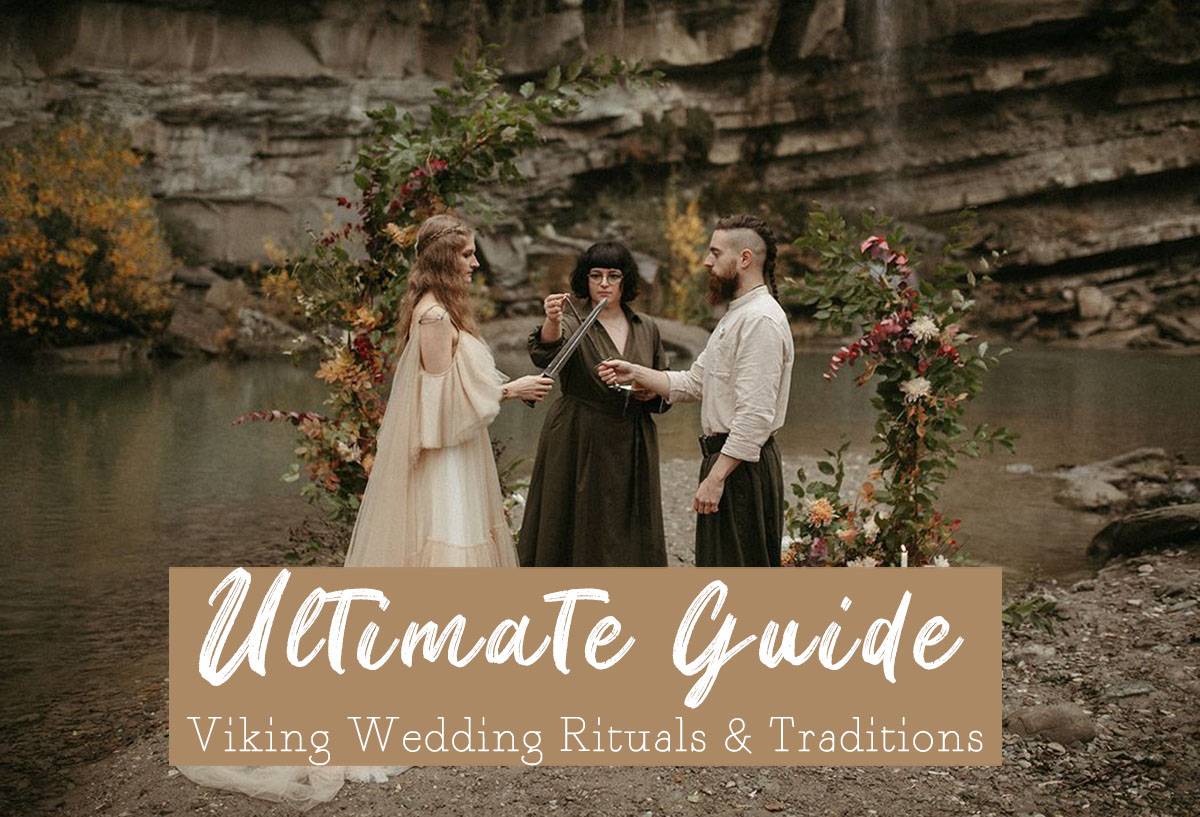
Viking wedding rituals and traditions have been passed down through generations and are still celebrated today. These ceremonies are rich in symbolism and meaning, reflecting the Viking culture’s values and beliefs. If you’re interested in learning more about Viking wedding traditions, this guide is for you.

The Engagement
In Viking culture, the engagement was a formal agreement between the families of the bride and groom. The groom would send a delegation to the bride’s family to negotiate the terms of the engagement. The bride’s family would then decide whether to accept the proposal or not. If they agreed, the couple would exchange gifts as a sign of their commitment to each other.
The Wedding Ceremony
The wedding ceremony was a significant event in Viking culture, and it was typically held in the bride’s home. The ceremony was conducted by a chieftain or a priest, who would bless the union and offer prayers for the couple’s future happiness.
One of the most unique aspects of Viking weddings was the exchange of swords. The groom would present his bride with a sword, which was a symbol of his trust and respect for her. In return, the bride would give her groom a sword, which symbolized her willingness to defend their home and family.
Another important tradition was the exchange of rings. The rings were made of iron, gold, or silver, and were engraved with symbols and runes. The rings were worn on the couple’s fingers as a sign of their commitment to each other.
Here are some of the most important elements of the ceremony:
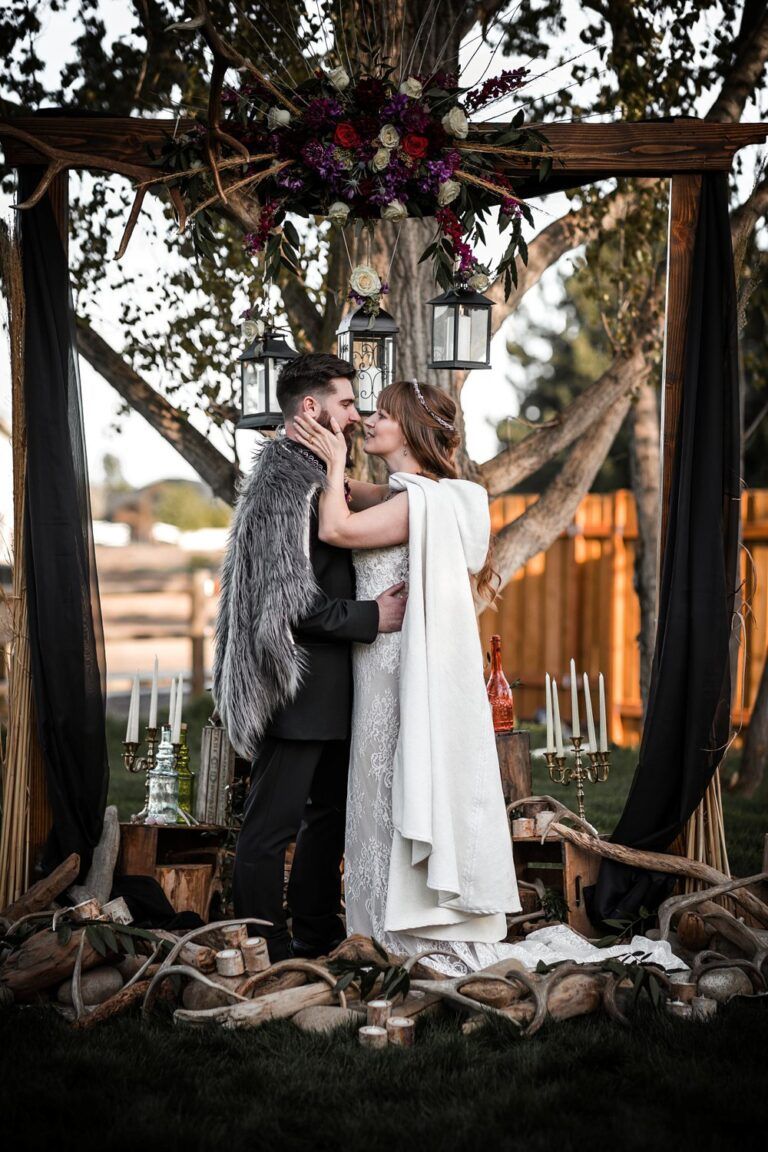
The Location
Viking weddings were typically held outdoors, in a location that was meaningful to the couple. This could be a field, a forest, or a beach.
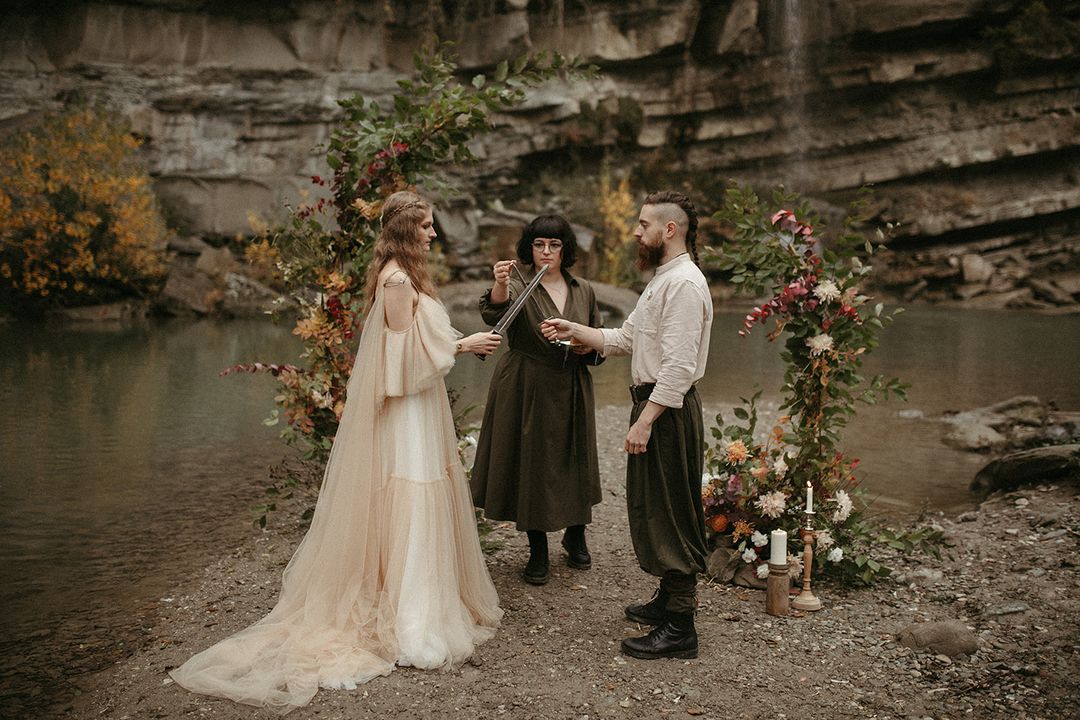
The Procession
The wedding procession was a key part of the ceremony. The groom would lead the procession, followed by his groomsmen and family members. The bride would then follow, accompanied by her bridesmaids and family members.
The Exchange of Vows
The exchange of vows was a solemn and meaningful moment in the ceremony. The couple would exchange promises of love, fidelity, and commitment.
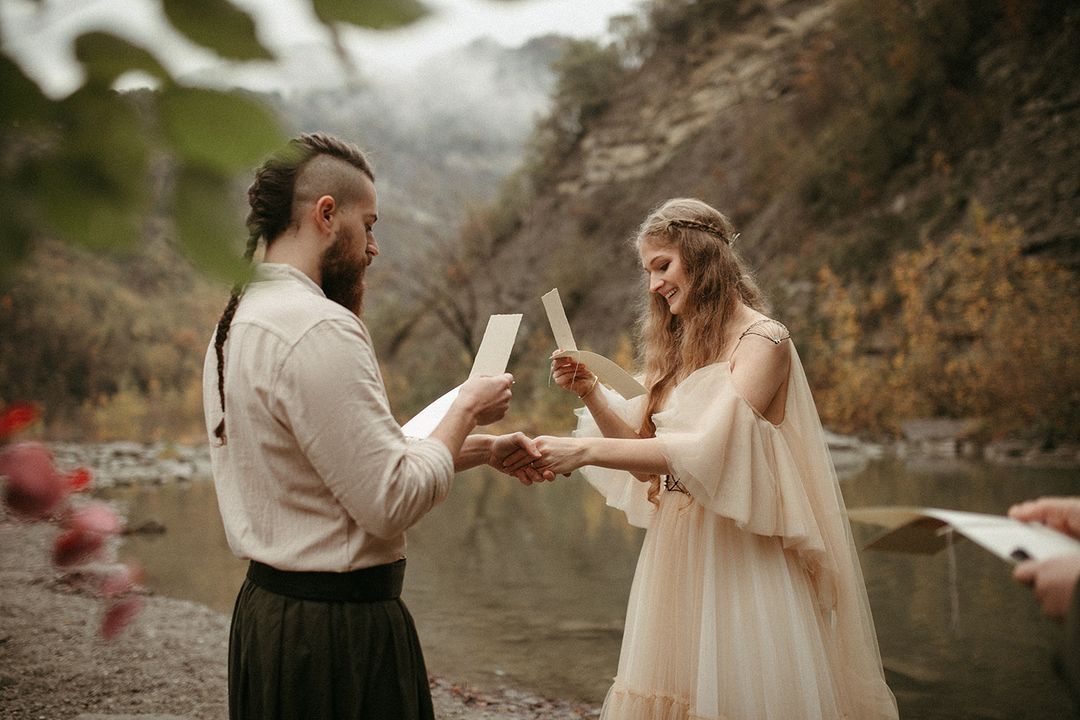
The Exchange of Rings
The exchange of rings was another important part of the ceremony. The rings were a symbol of the couple’s love and commitment to each other.
The Drinking Horn
The drinking horn was a symbol of hospitality and friendship. During the ceremony, the couple would drink from a shared drinking horn, which was passed around to the guests.
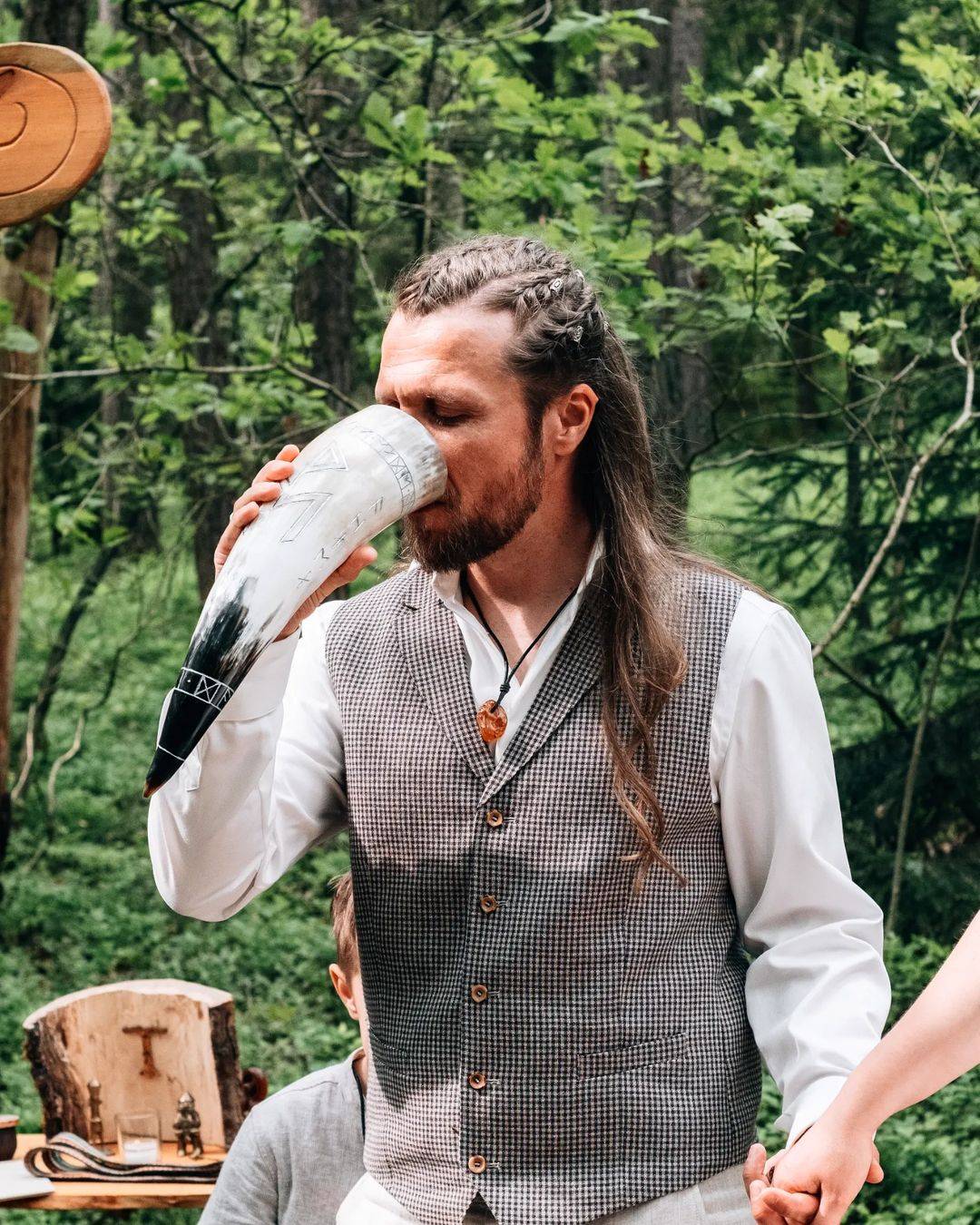
The Handfasting
The handfasting was a symbolic act that represented the couple’s union. The couple’s hands would be bound together with a cord, which was then tied in a knot. This knot was a symbol of the couple’s commitment to each other.
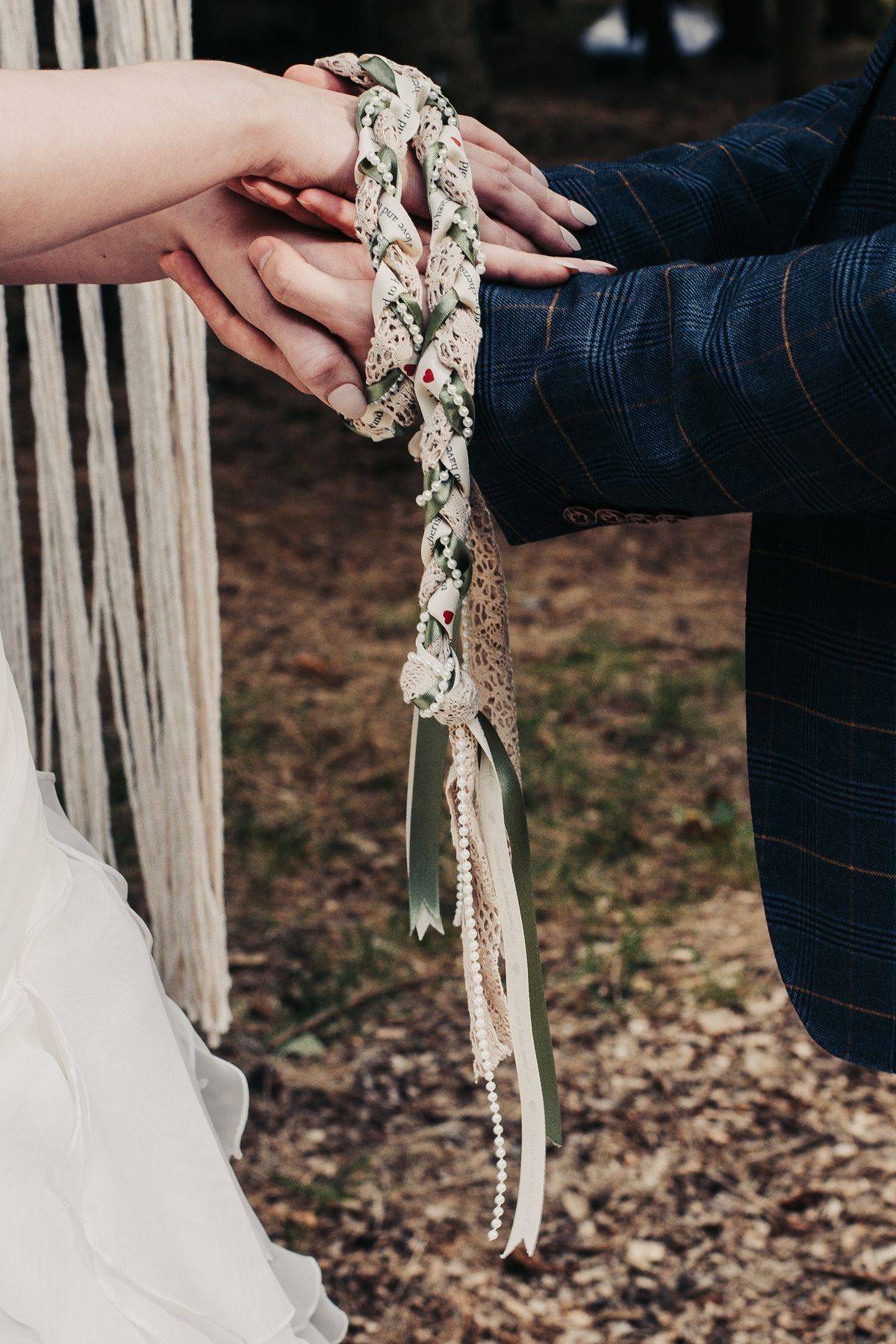
The Sword Ceremony
The sword ceremony was a tradition that symbolized the groom’s protection of his bride. The groom would present his bride with a sword, which she would then touch. This act symbolized her acceptance of his protection.
The Wedding Feast
After the wedding ceremony, the couple and their guests would gather for a feast. The feast was a time of celebration, where everyone would eat, drink, and be merry. The food was typically meat, fish, and vegetables, and the drink was mead, which was made from honey.
During the feast, the couple would drink from a shared cup, which was a symbol of their unity. The cup was passed around to the guests, who would drink to the couple’s health and happiness.
The Wedding Night
The wedding night was a special time for the couple, as it was their first night together as husband and wife. The couple would retire to their bedchamber, where they would consummate their marriage.
In Viking culture, it was believed that the couple’s first child would be blessed by the gods if they conceived on their wedding night. To ensure the couple’s privacy, their bedchamber was guarded by their closest friends and family.
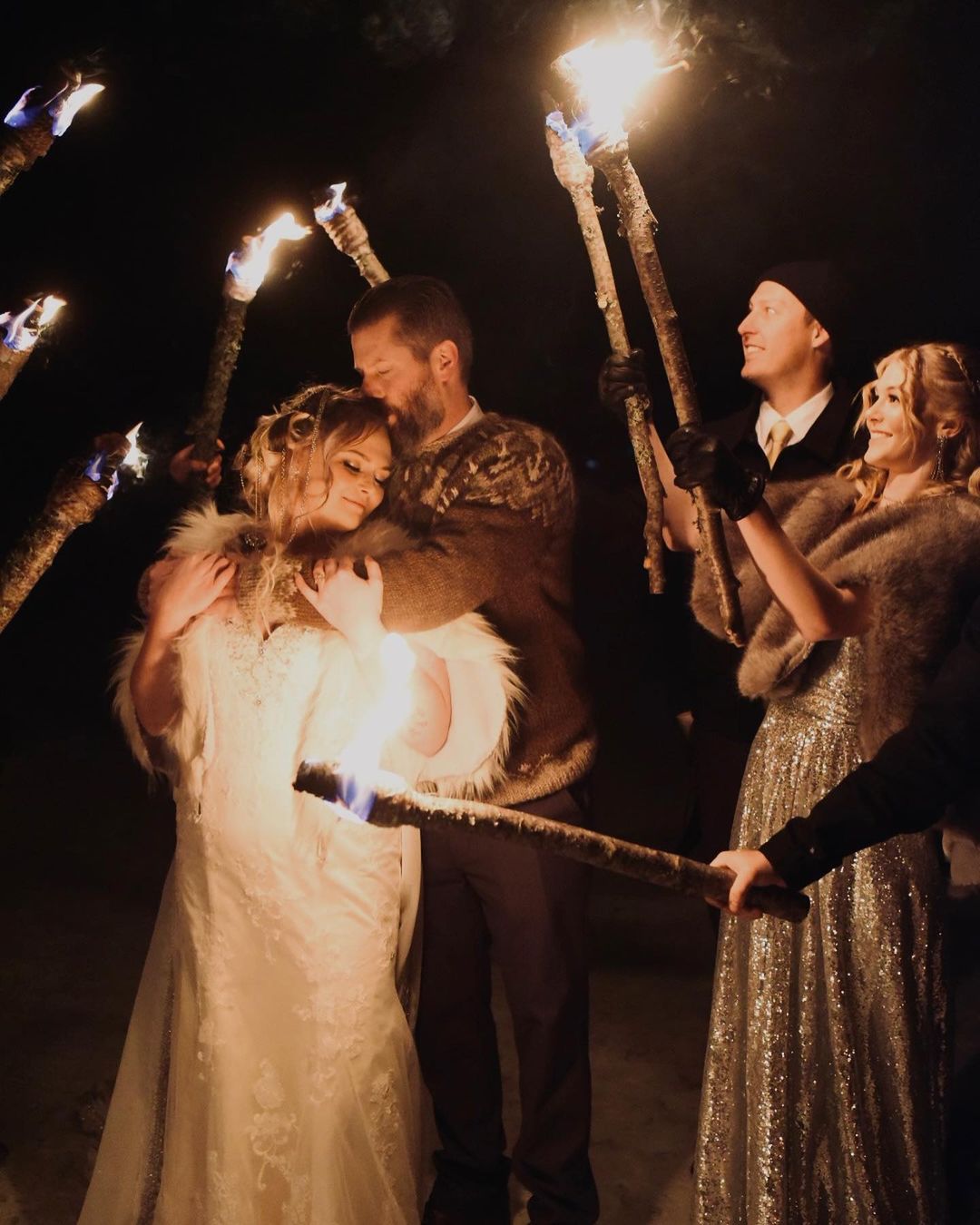
How to Have a Modern Viking Wedding Ceremony
Are you a fan of Norse mythology and Viking culture? Do you want to incorporate these elements into your wedding ceremony? Here are some ideas for how to have a modern Viking wedding ceremony:
Venue
Choose a venue that reflects the rugged beauty of the Norse landscape. A forest, a mountain, or a rocky beach would be perfect. If you can’t find a natural setting, consider a rustic barn or a venue with exposed brick walls and wooden beams.
Attire
For the bride, a simple white dress with a fur shawl or cape would be appropriate. The groom could wear a traditional Viking tunic with leather pants and boots. Both the bride and groom could wear a simple circlet or crown made of metal or flowers.
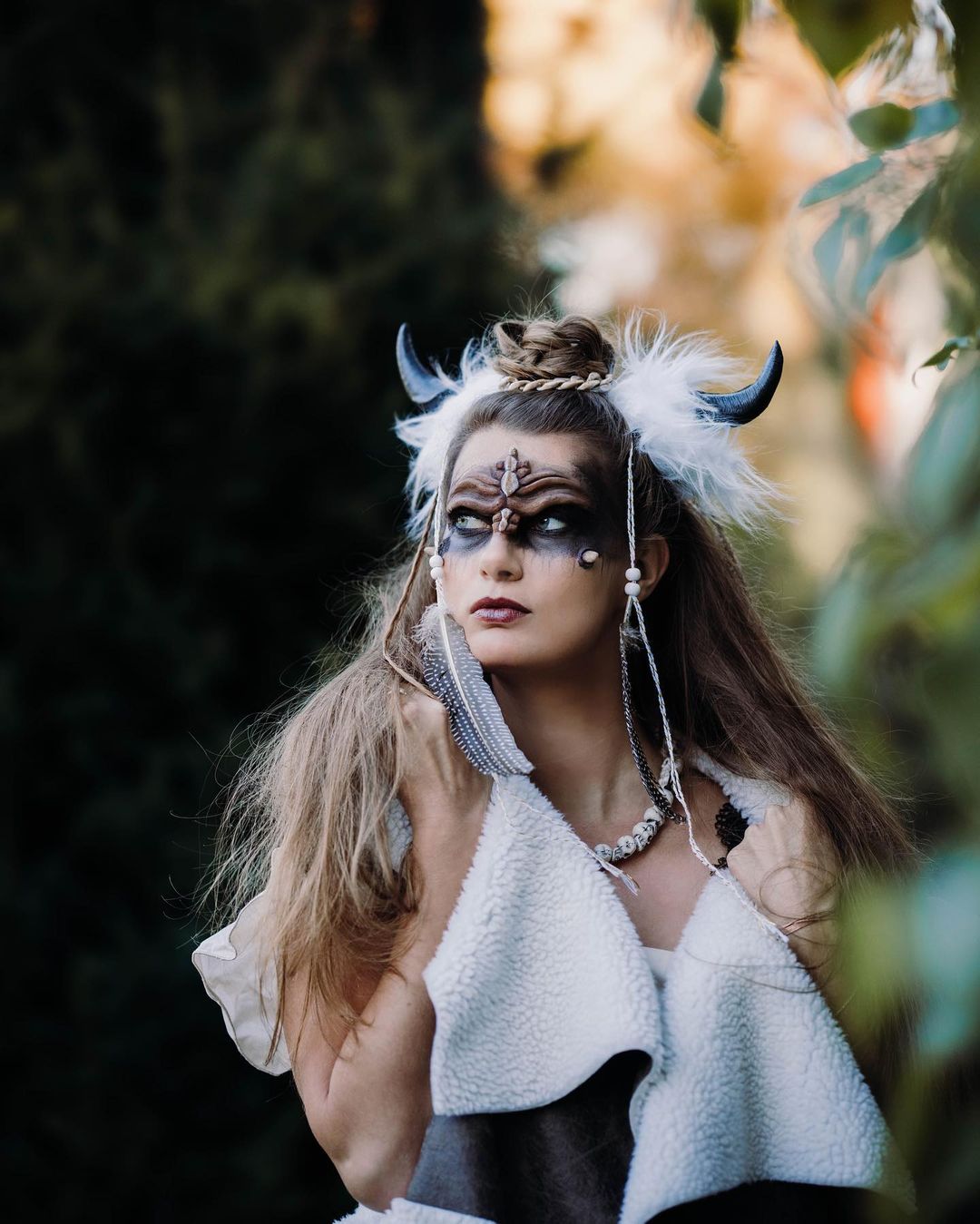
Decorations
Incorporate elements of Norse mythology into your decorations. Use a Mjolnir (Thor’s hammer) as a centerpiece, or hang banners with Viking symbols such as the Valknut or the Aegishjalmur. Use simple, natural materials such as wood, stone, and fur to create a rustic, authentic atmosphere.
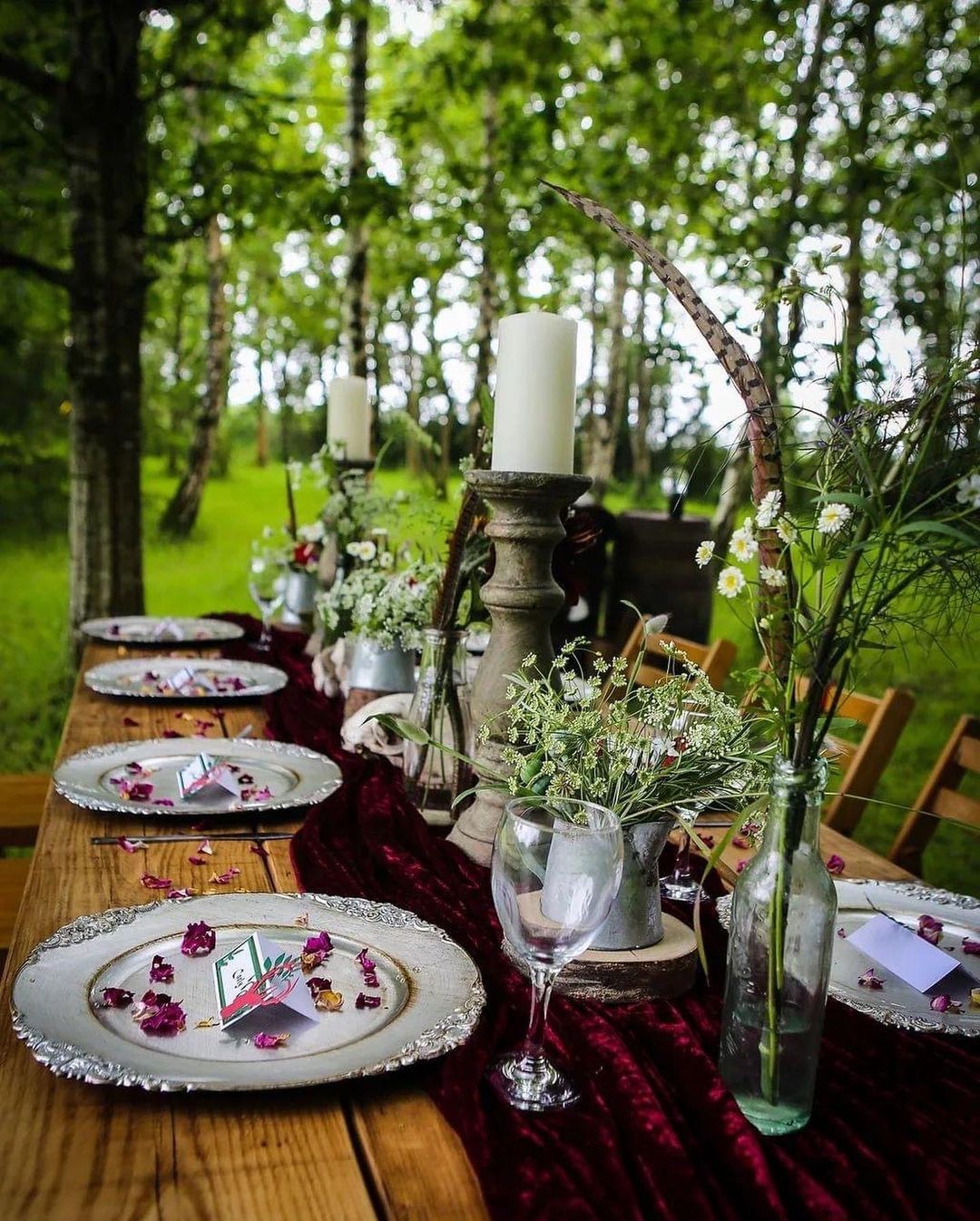
Ceremony
In a modern Viking wedding ceremony, the bride and groom exchange vows in front of a sacred fire. The officiant could recite the Norse poem “Hávamál,” which contains advice for living a virtuous life. The couple could also exchange rings with Viking designs, such as runes or knotwork.
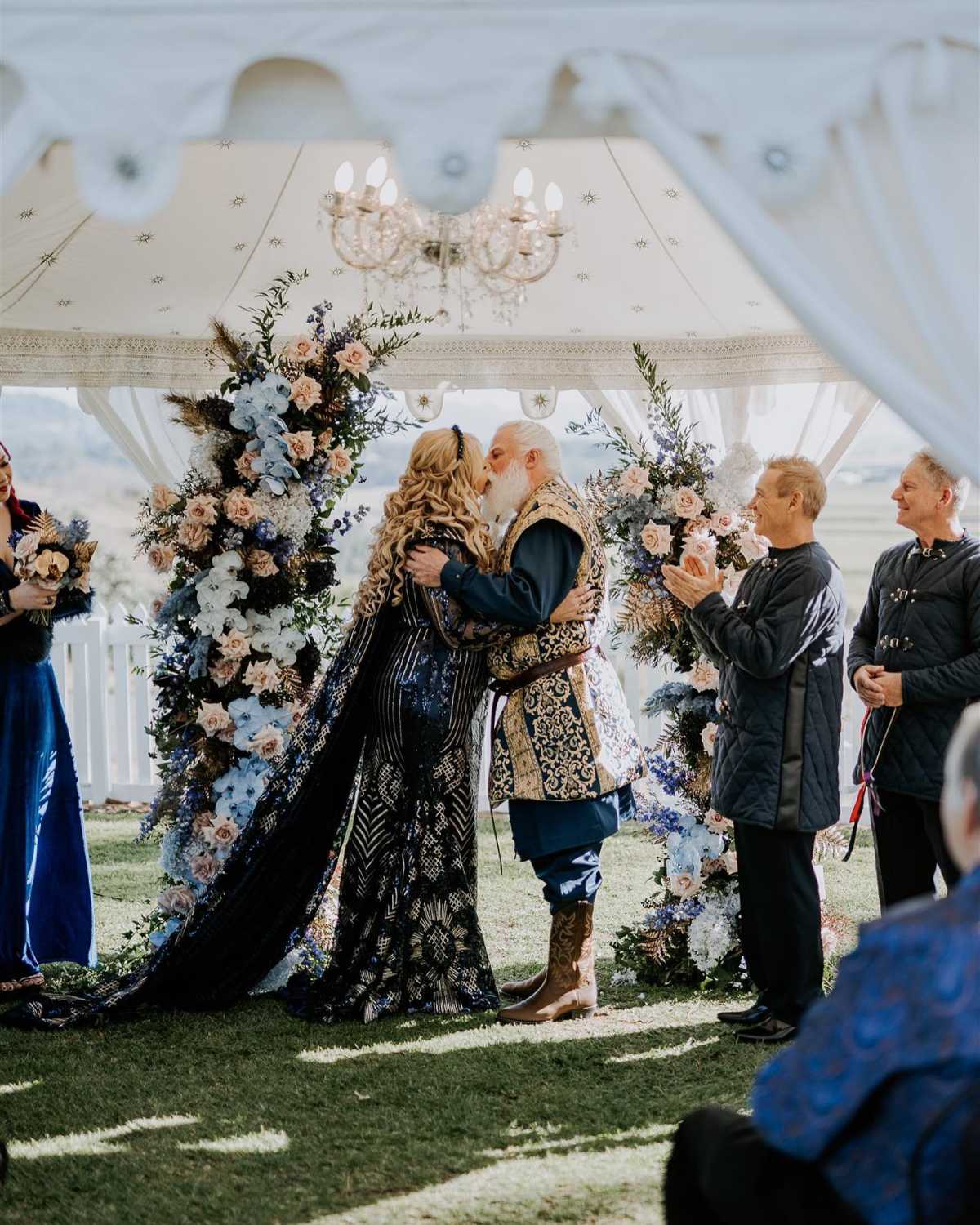
Feast
After the ceremony, celebrate with a feast fit for a Viking king and queen. Serve hearty dishes such as roasted meat, root vegetables, and mead (a honey-based alcoholic beverage). Play traditional Nordic music and dance the night away.
What are some Viking wedding vows?
Viking wedding vows were typically concise and direct, with the couple pledging to love and cherish each other until death. Surprisingly, these vows bear a striking resemblance to modern-day wedding vows. Below are some examples of Viking wedding vows:
- “I, [name], take you, [name], to be my lawfully wedded spouse, to have and to hold, from this day forward, for better or for worse, for richer or for poorer, in sickness and in health, until death do us part.”
- “With this ring, I thee wed. I give you my heart and soul, and promise to love and cherish you always.”
- “I promise to be your faithful partner, to stand by your side through thick and thin, and to love and support you for all eternity.”
Although Viking wedding vows may appear similar to some modern wedding vows, they held a deep significance for Viking couples. The emphasis was on the commitment to love and respect each other for life, rather than on extravagant words or grand gestures.
Apart from the vows, Viking weddings frequently involved a handfasting ceremony where the couple’s hands were tied together with a ribbon or cord to signify their union. This practice is still prevalent in contemporary Pagan and Wiccan wedding rituals.
Overall, Viking wedding vows reflected the practical and straightforward nature of Viking culture. Even though they may not have been as ornate as modern wedding vows, they were equally heartfelt and meaningful.
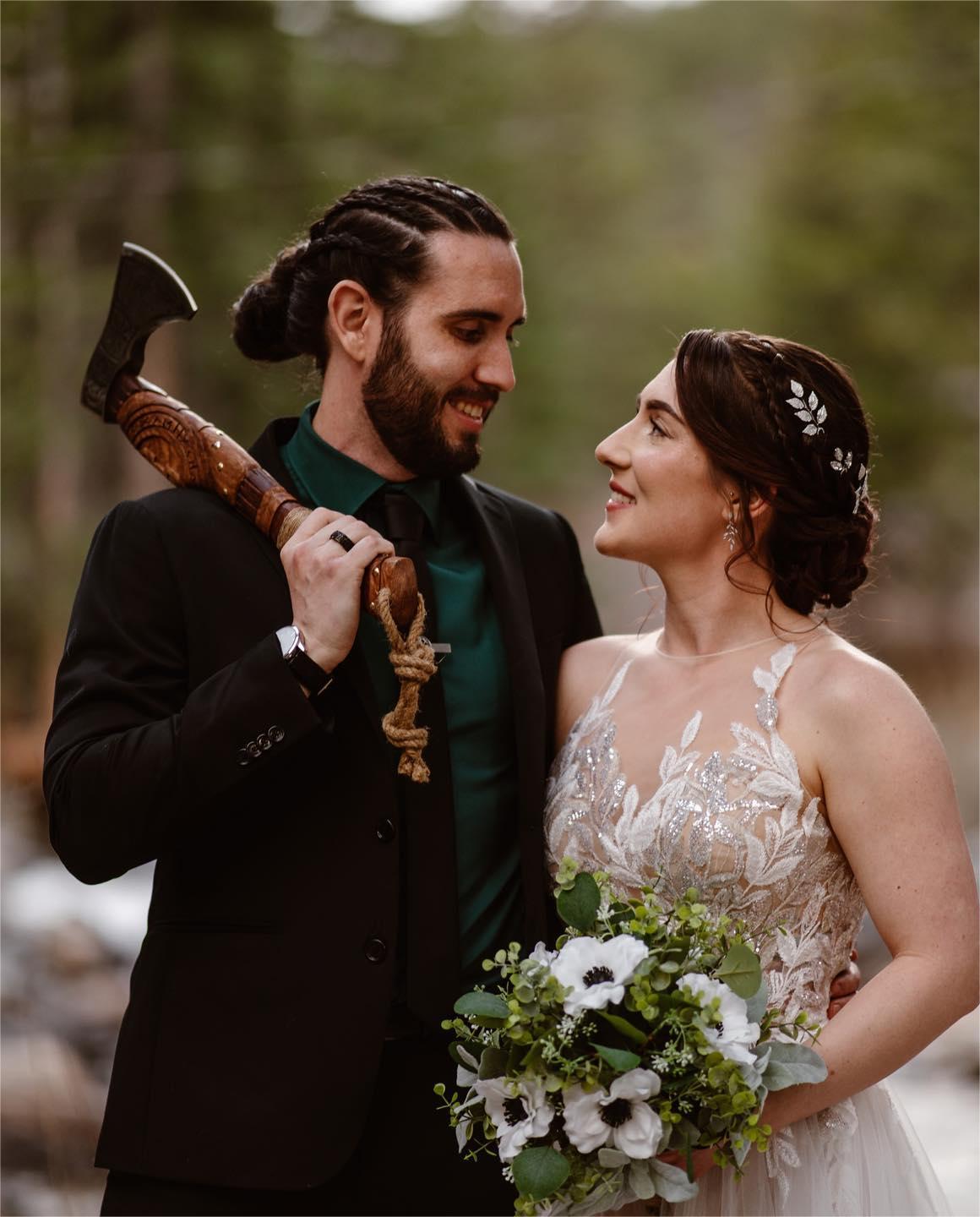
Conclusion
Viking wedding rituals and traditions are rich in symbolism and meaning. They reflect the values and beliefs of the Viking culture and are still celebrated today. If you’re planning a Viking-themed wedding, incorporating these traditions into your ceremony can add depth and meaning to your special day.
FAQ
What is a Viking wedding called?
A Viking wedding, also known as a Norse wedding, was a traditional ceremony that united not only the bride and groom, but also their families. The wedding was a week-long celebration filled with feasting, music, and dancing. It was an opportunity for the bride and groom’s families to come together and form alliances. While we may not know the word used by Vikings in old Norse, weddings usually took place on a Friday, otherwise known as Frigg’s Day or Freya’s Day. Freya was the Norse goddess of fertility, making it the most auspicious day of the week to hold a marriage.
What are some unique Viking wedding traditions?
Viking weddings were known for their grandeur and festivities, which often lasted for a week. One of the most intriguing aspects of Viking weddings was the exchange of swords between the bride and groom, which symbolized the transfer of protection from the bride’s father to her new husband. Other unique traditions included the handfasting ritual, where the bride and groom’s hands were tied together with ribbons or cords while they said their vows, and the use of drinking horns, which were often used to serve mead, a traditional Viking drink made from fermented honey. Animal sacrifice was also a common practice at Viking weddings, seen as a way to honor the gods and ensure a happy and prosperous marriage.
Can anyone officiate a Viking wedding?
Anyone can officiate a Viking wedding, as long as they are legally authorized to do so in their jurisdiction. However, it’s important to do your research and understand the cultural and historical significance of the traditions you are incorporating into the ceremony. Many couples choose to work with a professional wedding officiant who has experience with Viking weddings to ensure that the ceremony is authentic and respectful.
What are some unique elements of a Viking wedding?
Some unique elements of a Viking wedding include the use of a wedding sword, which is often used to cut the wedding cake or to represent the strength and protection of the groom, and the inclusion of Norse runes and spell casting as part of the ceremony. Additionally, Vikings believed that the number nine was lucky, so many couples choose to incorporate this number into their wedding in various ways, such as having nine guests or exchanging nine vows.
Are Viking weddings legally recognized?
Whether a Viking wedding is legally recognized depends on the laws of the country or state where the wedding takes place. In some cases, a Viking wedding may be considered a symbolic or spiritual ceremony, while in others it may be legally binding. It’s important to research the legal requirements for marriage in your area and to obtain any necessary licenses or permits before the wedding.
What did Viking brides wear?
Viking brides didn’t necessarily wear white dresses like modern brides. Instead, they wore long flowing dresses of any color with ruffles. The color of the dress could be anything from blue to green to red, as long as it was a vibrant color. Brides would wear a crown or wreath made of flowers or herbs, which symbolized fertility and new beginnings. The headdress would often be accompanied by a veil, which was meant to ward off evil spirits. Viking brides also wore a variety of jewelry, including necklaces, bracelets, and earrings, often made of silver or gold, which were thought to be a symbol of wealth and status. Finally, Viking brides often wore fur or woolen cloaks, which were often decorated with intricate embroidery or patterns, and were a symbol of the bride’s skill and craftsmanship.
What were Viking wedding vows like?
Viking wedding vows were often simple and to the point, with the couple promising to love and honor each other for the rest of their lives. Here are a few examples of Viking wedding vows:
“I, [name], take you, [name], to be my lawfully wedded spouse, to have and to hold, from this day forward, for better or for worse, for richer or for poorer, in sickness and in health, until death do us part.”
“With this ring, I thee wed. I give you my heart and soul, and promise to love and cherish you always.”
“I promise to be your faithful partner, to stand by your side through thick and thin, and to love and support you for all eternity.”
The focus was on the commitment to love and honor each other for life, rather than on flowery language or grand gestures. In addition to the vows, Viking weddings often included a handfasting ceremony, where the couple’s hands were bound together with a ribbon or cord to symbolize their union.
What should I wear to a Viking wedding?
Traditional Viking wedding attire for women includes a long, flowing dress with a simple headdress, while men typically wear a tunic, trousers, and boots. Both men and women may also wear a cloak or shawl, depending on the weather. It’s important to remember that Viking weddings are often held outdoors, so dress accordingly and be prepared for any weather conditions.
Comments are closed.